Pressure Drop Prediction of Crude Oil Pipeline Based on PSO-BP Neural Network
Abstract
:1. Introduction
2. Analysis of Influencing Factors of Pressure Drop Calculation
2.1. Brief Introduction of Pipeline Operation Condition
2.2. Analysis of Influencing Factors
3. BP Algorithm Model
4. Optimized PSO-BP Neural Network Pressure Drop Model
PSO-BP Algorithm
5. Calculation of Pipeline Hydraulic Pressure Drop
5.1. Calculation Examples
5.2. Construction of PSO-BP Pressure Drop Calculation Model
5.3. Comparative Analysis of Pressure Drop Calculation Results
6. Conclusions
Author Contributions
Funding
Institutional Review Board Statement
Informed Consent Statement
Data Availability Statement
Acknowledgments
Conflicts of Interest
References
- Cai, R.H.; Cui, Y.X.; Xue, P.J. The determination method of hidden layer node number of three-layer BP neural network. Comput. Inf. Technol. 2017, 25, 29–33. [Google Scholar]
- Guo, Y.; Xiong, G.; Zeng, L.; Li, Q. Modeling and Predictive Analysis of Small Internal Leakage of Hydraulic Cylinder Based on Neural Network. Energies 2021, 14, 2456. [Google Scholar] [CrossRef]
- Han, W.; Nan, L.; Su, M.; Chen, Y.; Li, R.; Zhang, X. Research on the Prediction Method of Centrifugal Pump Performance Based on a Double Hidden Layer BP Neural Network. Energies 2019, 12, 2709. [Google Scholar] [CrossRef]
- Sun, T.; Huang, X.; Liang, C.; Liu, R.; Huang, X. Prediction and Analysis of Dew Point Indirect Evaporative Cooler Performance by Artificial Neural Network Method. Energies 2022, 15, 4673. [Google Scholar] [CrossRef]
- Li, S.B. Research on Online Simulation and Operation Optimization Technology of Long-Distance Hot Oil Pipeline; Tianjin University: Tianjin, China, 2016. [Google Scholar]
- Alpine; Qian, C.; Zhang, P.; Zhang, Y.; Zeng, L.; Tian, W. Based on the improved BP neural network prediction model of pipeline energy consumption. Oil Gas Storage Transp. 2014, 33, 869–872. [Google Scholar]
- Hou, L.; Xu, X.; Cui, J.; Shi, Y. Energy consumption prediction method of oil pipeline based on BP neural network. Energy Sav. Technol. 2009, 27, 401–406. [Google Scholar]
- Li, J.H.; Sun, S.C.; Cui, L. Leakage point location and experimental study of long-distance pipeline based on BP neural network principle. Eng. Mech. 2010, 27, 169–173. [Google Scholar]
- Li, X. Data Mining Algorithms Based on Data Preprocessing and Regression Analysis and Their Applications; Lanzhou Jiaotong University: Lanzhou, China, 2014. [Google Scholar]
- Qin, K.; Changqing, Y.; Yun, S. Research on data preprocessing methods under big data. Comput. Technol. Dev. 2018, 28, 1–4. [Google Scholar]
- Stanley, K.O.; Clune, J.; Lehman, J.; Miikkulainen, R. Designing neural networks through neuroevolution. Nat. Mach. Intell. 2019, 1, 24–35. [Google Scholar] [CrossRef]
- Nikolaus, K.; Tal, G. Neural network models, and deep learning. Curr. Biol. 2019, 29, 11–19. [Google Scholar]
- Zhang, H.; Tian, Z. Failure analysis of corroded high-strength pipeline subject to hydrogen damage based on FEM and GA-BP neural network. Int. J. Hydrogen Energy 2022, 47, 14–35. [Google Scholar] [CrossRef]
- Xu, B.; Dan, H.C.; Li, L. Temperature prediction model of asphalt pavement in cold regions based on an improved BP neural network. Appl. Therm. Eng. 2017, 120, 568–580. [Google Scholar] [CrossRef]
- Ling, X.; Xu, L.S.; Yu, J.P.; Liang, R. The prediction of corrosion rate in oil pipeline based on improved BP neural network. Sens. Microsyst. 2021, 40, 124–127. [Google Scholar]
- Yang, A.H.; Qing, P.; Liu, G.Z. BP algorithm fixed learning rate does not converge cause analysis and countermeasures. Syst. Eng. Theory Pract. 2002, 12, 22–25. [Google Scholar] [CrossRef]
- Jiang, Y.J.; Ning, L.; Dao, H. Application of BP network with modified initial weights in CSTR fault diagnosis. J. East China Univ. Technol. 2004, 30, 207–210. [Google Scholar]
- Zhou, H.; Sun, G.; Fu, S.; Liu, J.; Zhou, X.; Zhou, J. A big data mining approach of pso-based bp neural network for financial risk management with iot. IEEE Access 2019, 7, 154035–154043. [Google Scholar] [CrossRef]
- Sun, B.C. The Residual Strength Prediction of Corroded Pipelines is Based on an Improved BP Algorithm and Genetic Algorithm; Lanzhou University of Technology: Lanzhou, China, 2011. [Google Scholar]
- Wang, J.; Jiao, J.; Yu, H.; Chen, Z.; Yu, B. Energy consumption optimization method for crude oil pipeline system based on swarm intelligence optimization. Oil Gas Storage Transp. 2022, 41, 1–9. [Google Scholar]

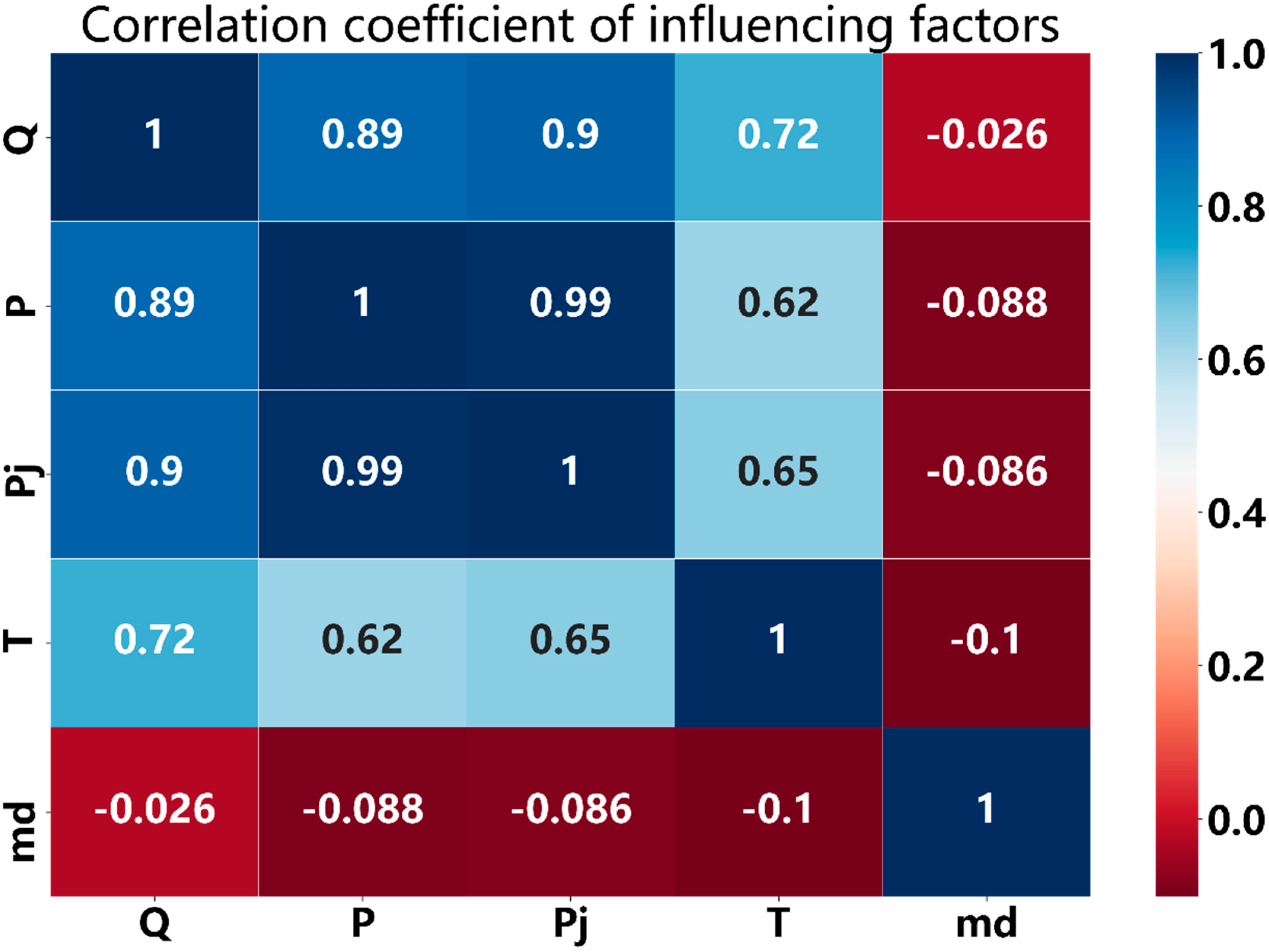
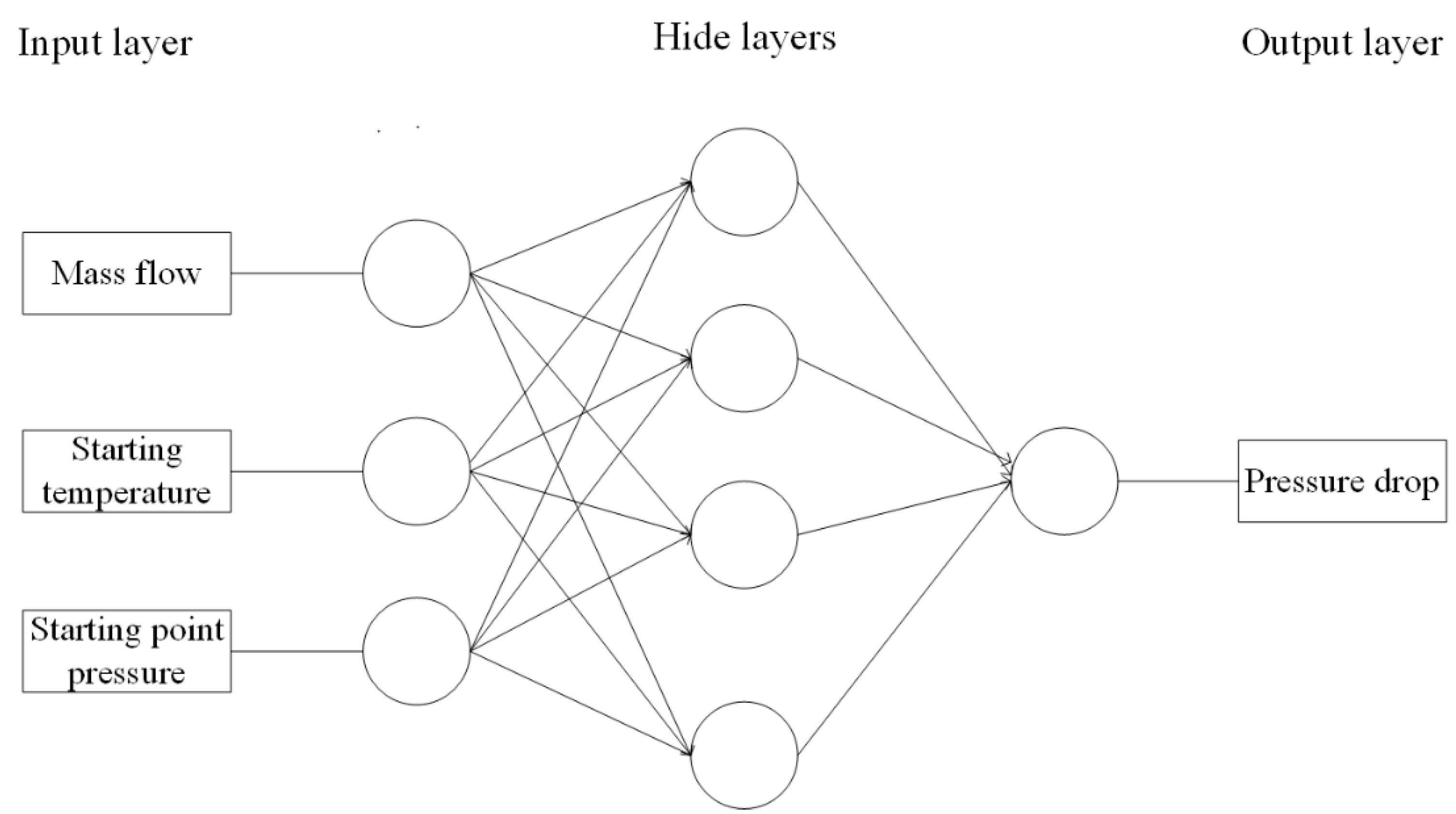

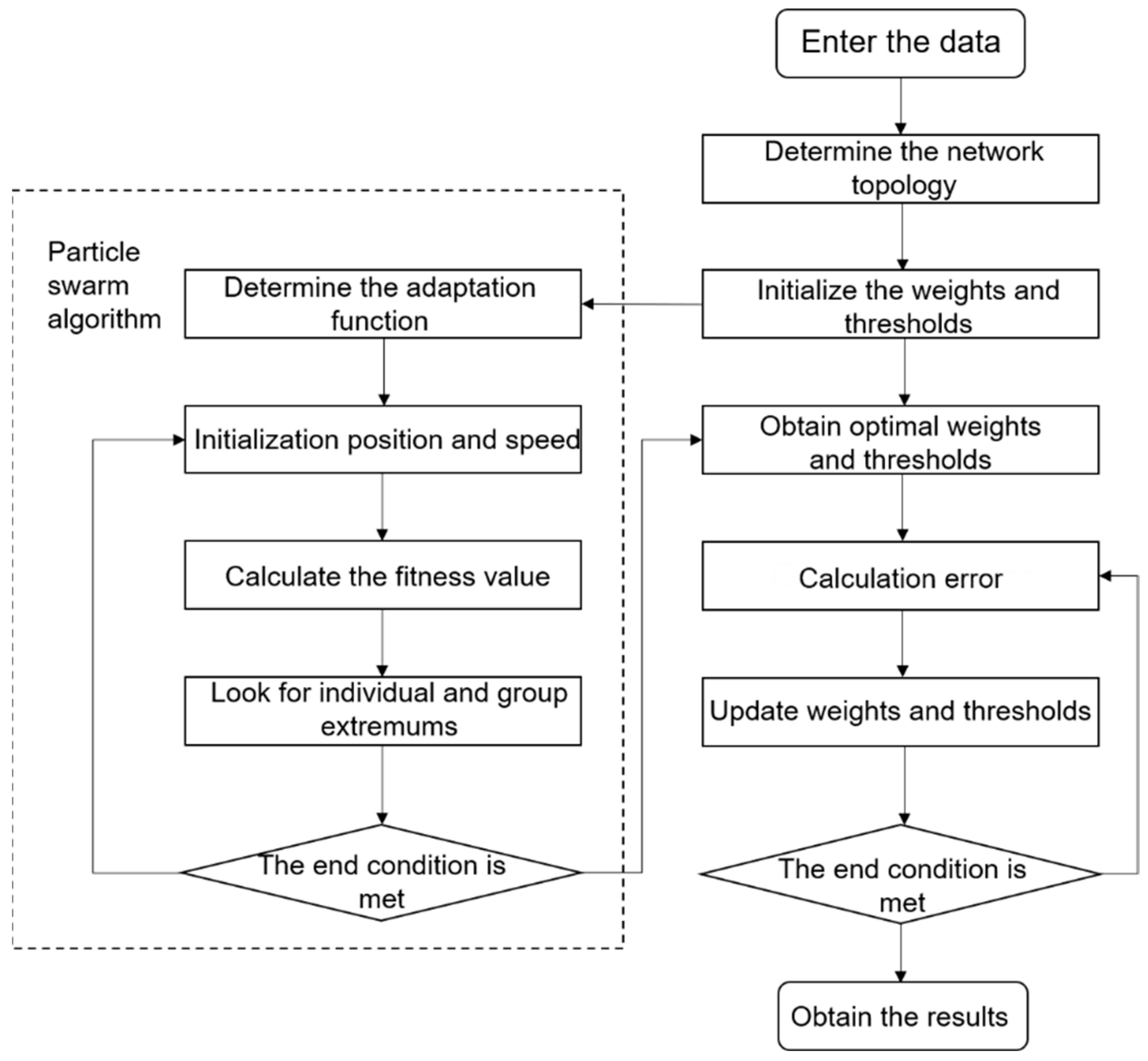
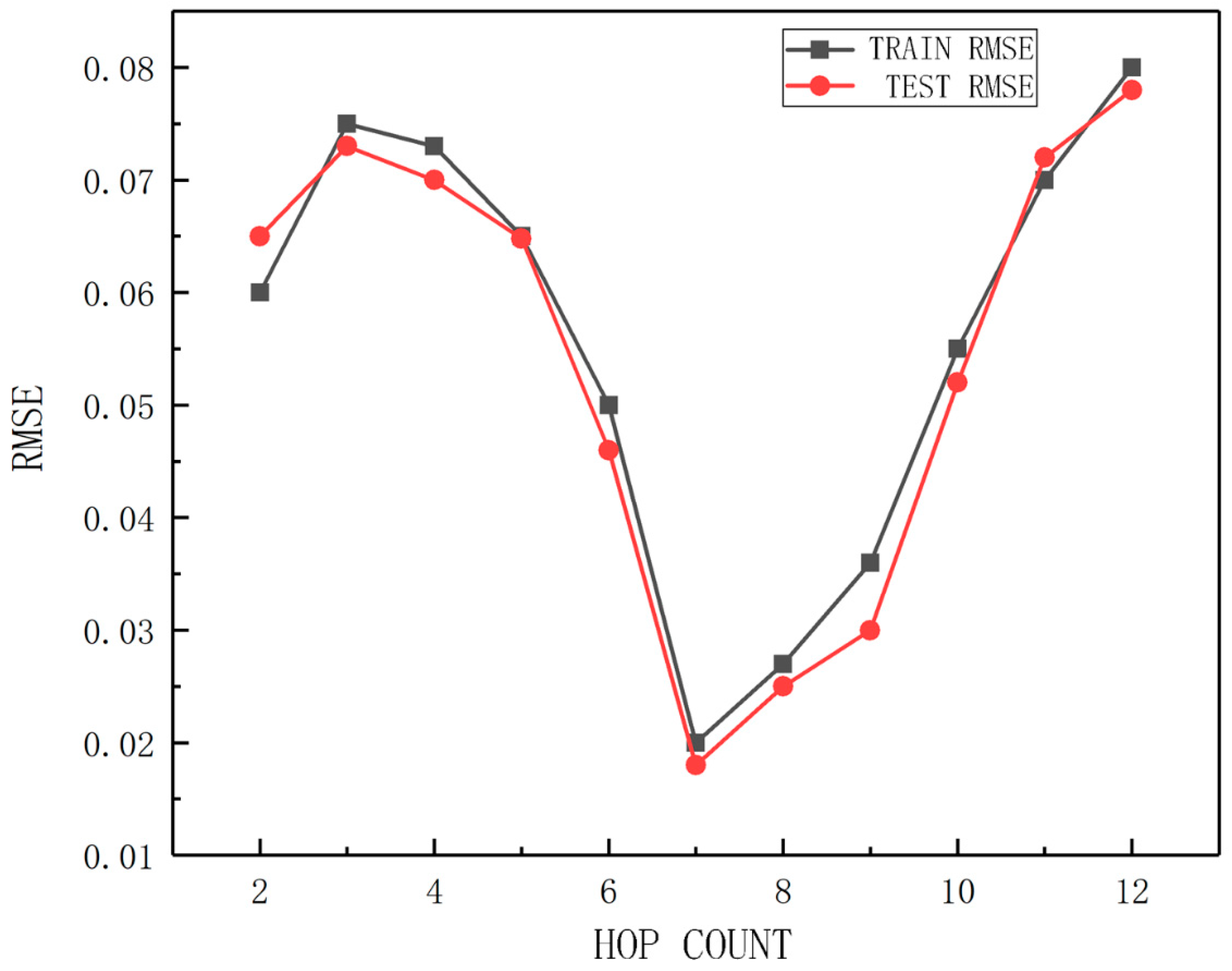
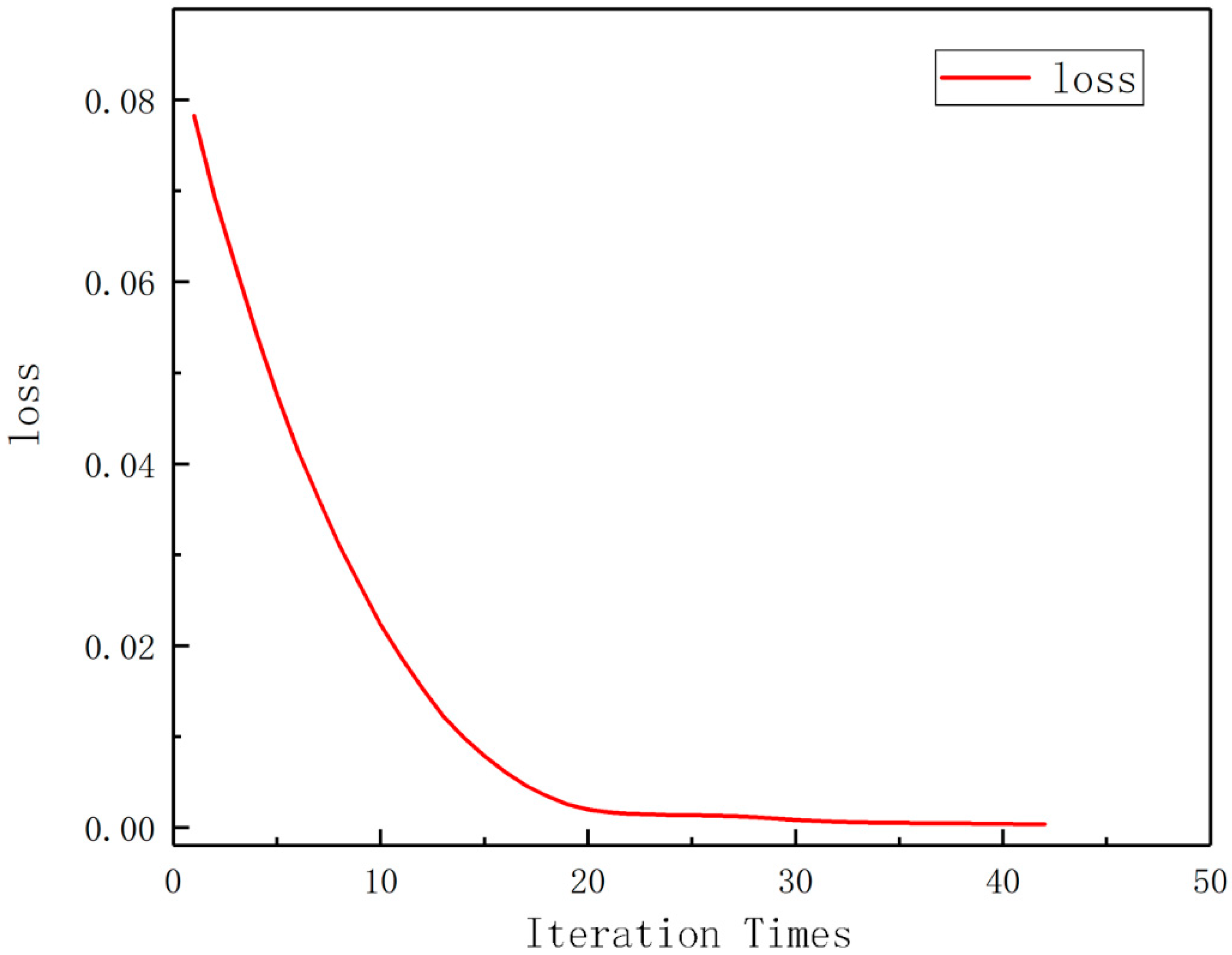


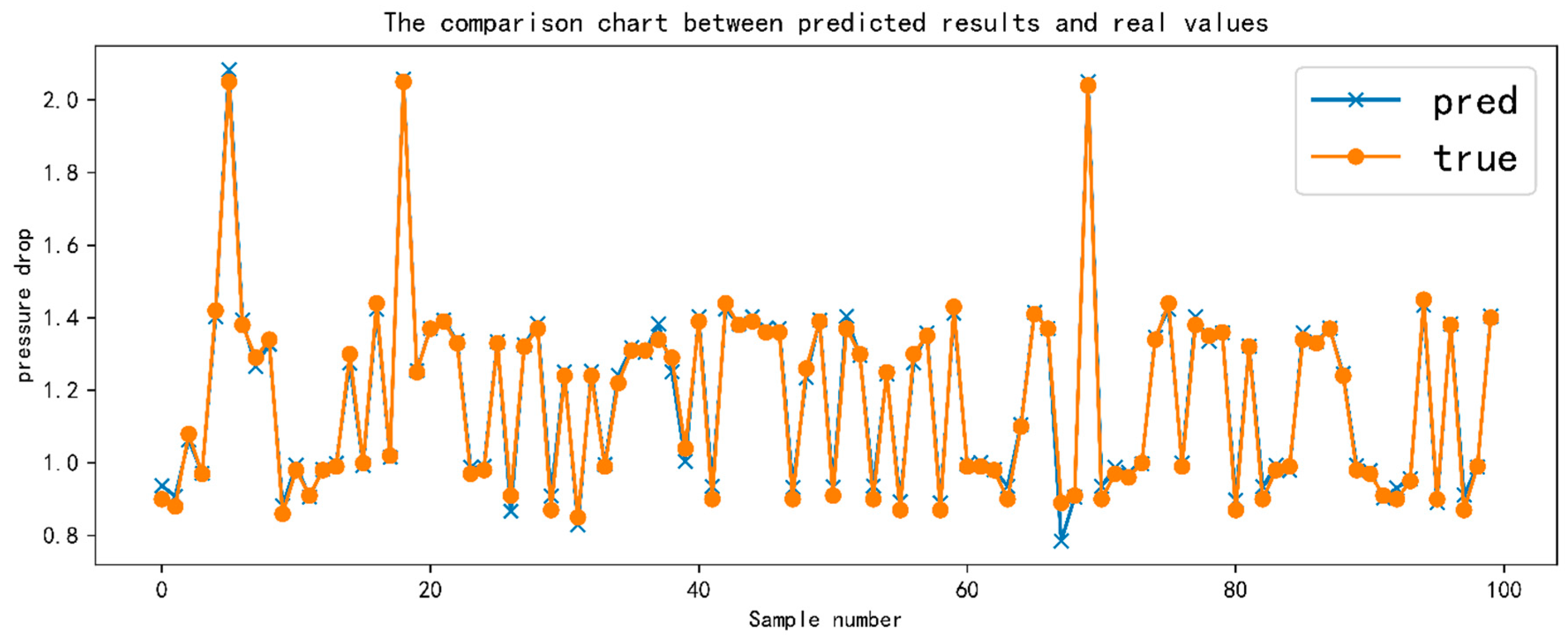

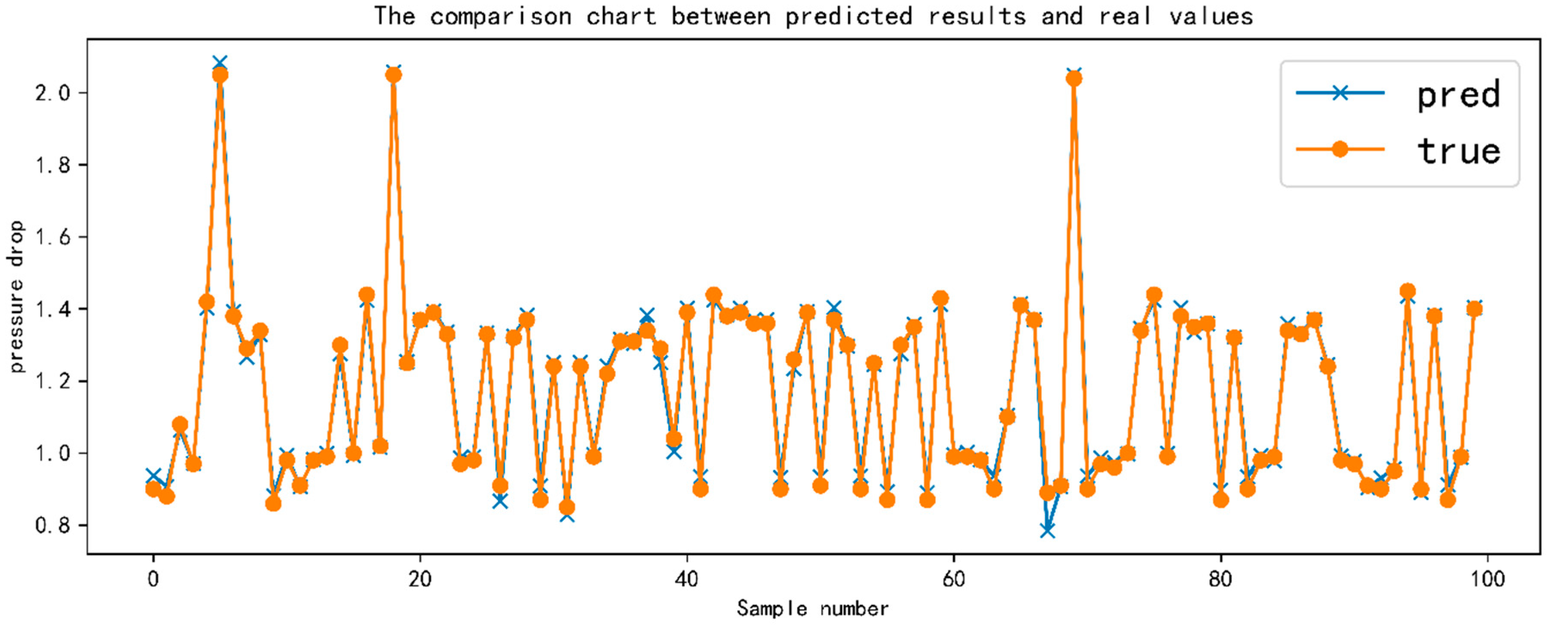
| Mass Flow (ton/h) | Oil Temperature (°C) | Starting Pressure (MPa) | Density (103 Kg/m3) | Pressure Drop (MPa) |
|---|---|---|---|---|
| 221.2128 | 51.25 | 0.97 | 0.8698 | 0.85 |
| 223.547 | 50 | 0.99 | 0.8688 | 0.87 |
| 268.3073 | 50.75 | 1.37 | 0.87 | 1.25 |
| 273.3313 | 51.25 | 1.37 | 0.8696 | 1.24 |
| 275.0043 | 51.25 | 1.37 | 0.8696 | 1.25 |
| 236.1731 | 57.5 | 1.23 | 0.8702 | 1.1 |
| 238.014 | 57.5 | 1.09 | 0.8694 | 0.96 |
| 236.354 | 53.5 | 1.1 | 0.8708 | 0.97 |
| 282.0318 | 54 | 1.49 | 0.8696 | 1.39 |
| 293.799 | 53.75 | 1.49 | 0.8695 | 1.38 |
| 292.2854 | 52.5 | 1.5 | 0.8692 | 1.39 |
| 291.7382 | 54 | 1.48 | 0.8686 | 1.36 |
| 289.9206 | 54 | 1.49 | 0.87 | 1.36 |
| 293.1723 | 54 | 1.5 | 0.8696 | 1.36 |
| 238.0784 | 52.75 | 1.05 | 0.8694 | 0.93 |
| 227.7555 | 52.5 | 1.05 | 0.8684 | 0.93 |
| 229.6628 | 52.5 | 1.04 | 0.8697 | 0.92 |
| 229.8628 | 52.25 | 1.05 | 0.8696 | 0.91 |
| 228.3393 | 52.5 | 1.05 | 0.87 | 0.93 |
| 228.1908 | 51.25 | 1.04 | 0.8686 | 0.92 |
| 189.0346 | 52.75 | 1.02 | 0.8706 | 0.9 |
| 225.1411 | 53 | 1.02 | 0.87 | 0.9 |
| 225.1944 | 53 | 1.02 | 0.8696 | 0.9 |
| 343.0175 | 53.75 | 2.17 | 0.8696 | 2.05 |
| 368.3538 | 53.25 | 2.18 | 0.8696 | 2.06 |
| 369.1735 | 54.5 | 2.14 | 0.8696 | 2.02 |
| 285.7059 | 53.5 | 1.01 | 0.8694 | 0.89 |
| 228.5625 | 53 | 1.02 | 0.8703 | 0.9 |
| 225.8829 | 53 | 1.02 | 0.8698 | 0.9 |
| 200.9451 | 50.5 | 0.97 | 0.8696 | 0.85 |
| 220.5551 | 51 | 0.99 | 0.8689 | 0.87 |
| 274.141 | 51.75 | 1.36 | 0.8688 | 1.24 |
| 273.0108 | 52 | 1.35 | 0.87 | 1.22 |
| 272.31 | 51.75 | 1.35 | 0.8697 | 1.23 |
| 262.0325 | 56.75 | 1.23 | 0.8696 | 1.1 |
| 236.9248 | 53.5 | 1.09 | 0.8696 | 0.96 |
| 237.3664 | 52.25 | 1.1 | 0.8696 | 0.97 |
| 290.5513 | 53.75 | 1.5 | 0.8715 | 1.4 |
| 290.4492 | 53 | 1.5 | 0.8697 | 1.39 |
Publisher’s Note: MDPI stays neutral with regard to jurisdictional claims in published maps and institutional affiliations. |
© 2022 by the authors. Licensee MDPI, Basel, Switzerland. This article is an open access article distributed under the terms and conditions of the Creative Commons Attribution (CC BY) license (https://creativecommons.org/licenses/by/4.0/).
Share and Cite
Wei, L.; Zhang, Y.; Ji, L.; Ye, L.; Zhu, X.; Fu, J. Pressure Drop Prediction of Crude Oil Pipeline Based on PSO-BP Neural Network. Energies 2022, 15, 5880. https://doi.org/10.3390/en15165880
Wei L, Zhang Y, Ji L, Ye L, Zhu X, Fu J. Pressure Drop Prediction of Crude Oil Pipeline Based on PSO-BP Neural Network. Energies. 2022; 15(16):5880. https://doi.org/10.3390/en15165880
Chicago/Turabian StyleWei, Lixin, Yu Zhang, Lili Ji, Lin Ye, Xuanchen Zhu, and Jin Fu. 2022. "Pressure Drop Prediction of Crude Oil Pipeline Based on PSO-BP Neural Network" Energies 15, no. 16: 5880. https://doi.org/10.3390/en15165880






